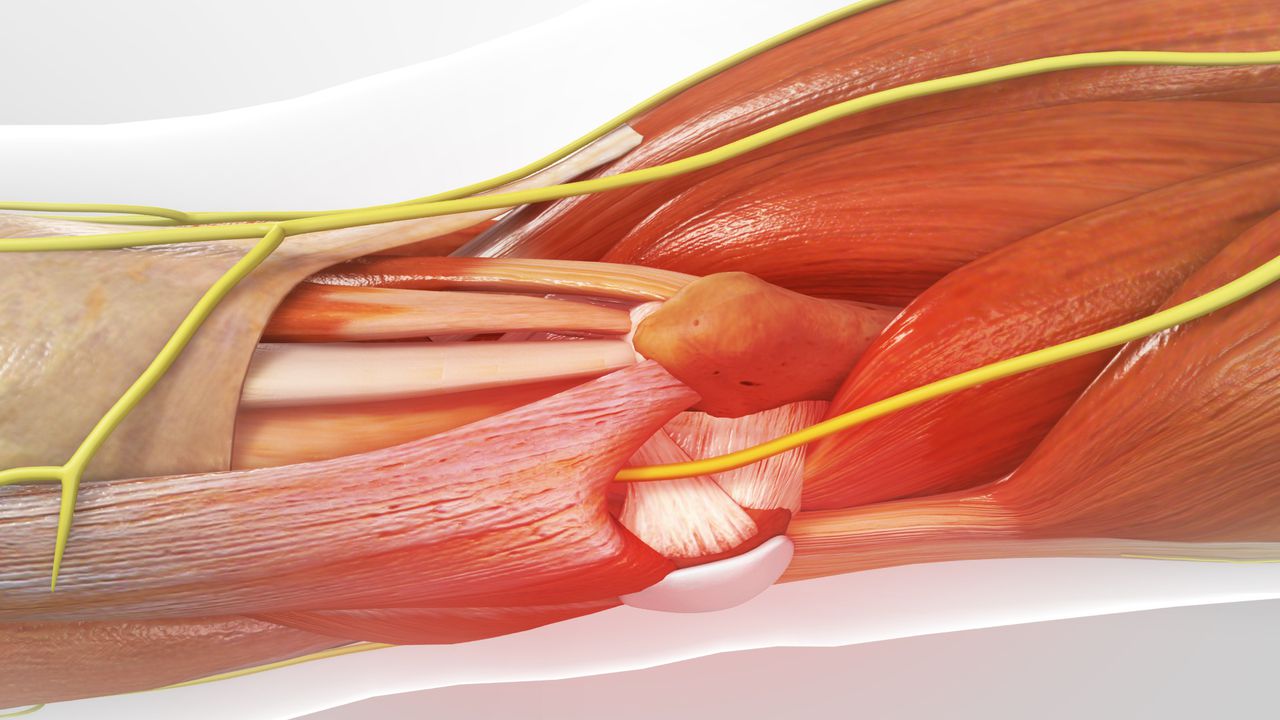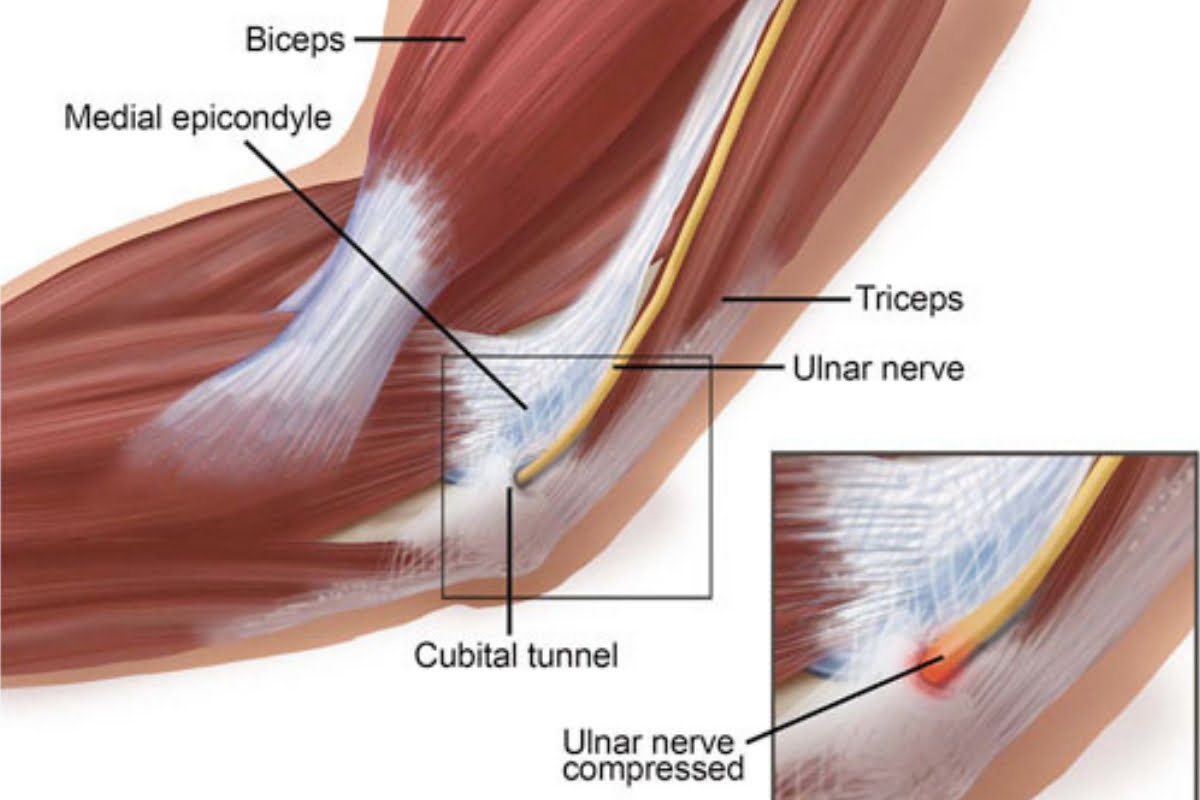Cubital tunnel syndrome is a nervous disorder associated with the injury, inflammation or
stretching of the ulnar nerve in the elbow region. The ulnar nerve being on the outer side of
elbow is more prone to injuries. As a result temporary numbness or tingling in the fingers may
occur. It is a condition of compressive neuropathy of the ulnar nerve and is the most common
cause of hand pain in many people. When pressure on the ulnar nerve increases beyond a
certain limit, it results in the cubital tunnel syndrome.
Does the cubital tunnel syndrome go away?
Yes it does, but completely without a trace maybe no. It may return after a few months or
years if proper post relief care is not taken seriously.
Where and how can we locate the cubital tunnel?? – Anatomy of cubital tunnel
- The cubital tunnel is a space in the elbow through which the ulnar nerve passes.
- The roof of the cubital tunnel has tissues known as Osborne’s ligament and fascia
muscles. - Posterior and transverse bands of Medial Collateral Ligament form the floor of the
cubital tunnel. - There is a cap-like structure known as the elbow joint capsule surrounding the cubital
tunnel. - On the lateral sides, it is covered by the medial epicondyle and the olecranon.


The ulnar nerve passes through the cubital tunnel between the two heads of the ulnar bone. The cubital tunnel starts from the medial epicondyle and ends in the olecranon. The ulnar nerve is a long nerve that runs long enough to extend from your neck to your hand. The structure is such that the bones and the muscles in your hand are not able to guard the ulnar nerve. Hence, Hand and elbow injuries often come with the risk of damaging the ulnar nerve.
Nerve damage is difficult to heal and often stays longer. Temporary relief can be provided but seldom permanent solutions to nerve damage can be expected. The tingling sensation is mainly due to the on and off restoration of nerve signals or absence of the same. The sensation is very similar to sudden passage of electric current through your body as in case of electric shocks.
What causes of cubital tunnel syndrome?
- It is due to the increased pressure on the ulnar nerve due to prolonged leaning. Your
fingers might get numb when you wake up because of the excessive pressure on the
nerve. - If you keep your elbow bent or stretched for a long time, the pressure on the nerve will
increase, and it will result in excessive pain. - It is also due to the movement of the ulnar nerve from its fixed position due to various
reasons.
Symptoms of cubital tunnel syndrome
Cubital tunnel syndrome is also known as ulnar nerve entrapment and has various symptoms.
Here are the most commonly observed symptoms of this syndrome.
- Significant pain in the elbow that can escalate to numbness.
- Tingling sensation in the fingers, especially the little and the ring finger.
- Inability to bend the little and ring finger.
- Reduced efficiency of the fingers.
- Deformity of the structure of the hand.
- Inability to grip objects with the fingers.
These are the visible symptoms of cubital tunnel syndrome. If you are experiencing any of
these syndromes, you need to consult an orthopaedic.


Diagnosis of cubital tunnel syndrome
You must consult an orthopaedic immediately after experiencing the above-mentioned
symptoms. The doctor will diagnose your hand to check if you have cubital tunnel syndrome.
Usually, the tests involve physical examination in the beginning-
- A nerve conduction test known as electromyography is conducted to check if there is
any nerve compression. - Electromyography involves the placement of electrodes on the skin to check the
underlying nerves and muscles. Doctors identify the nerve damage and then proceed to
decide the correct treatment procedure.
Treatment of cubital tunnel syndrome
Treatment of cubital tunnel syndrome usually involves physical procedures. Doctors identify
the causes of the syndrome and eliminate those causes to reduce the pressure on the ulnar
nerve. Physiotherapy can help relieve the pain to some extent. You need to go through several
sessions of physiotherapy to get rid of the syndrome.
In extreme cases, surgery might be needed. Surgeons release the ulnar nerve from the
contraption and move it to the upper surface. The procedure takes less time and is beneficial
for cases where the pain is unbearable.
It would be best if you had post-surgery therapy to prevent the nerve from getting swollen
again. Numbness can be reduced by taking preventive measures.
Conclusion:
Cubital tunnel syndrome is a common problem among people in their mid-30s and above. If
you experience the above-mentioned symptoms like tingling sensation in fingers or numbness,
consult an orthopaedic at the earliest to prevent further nerve damage.
